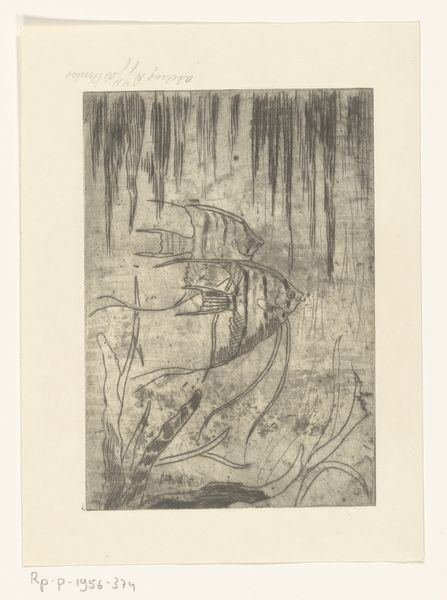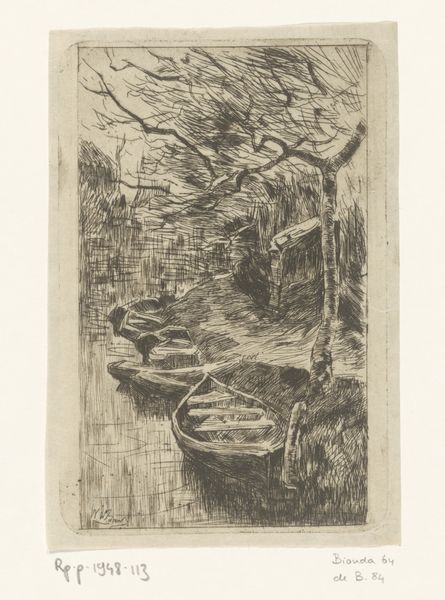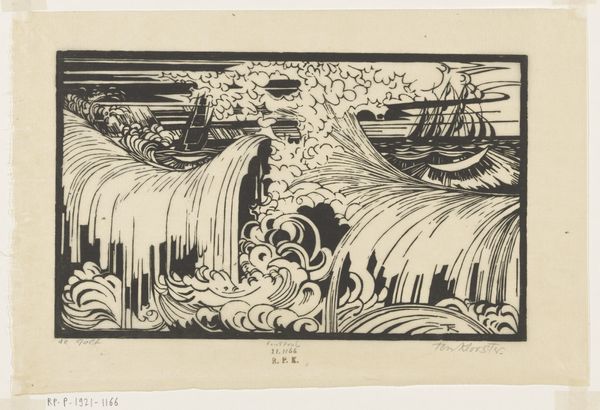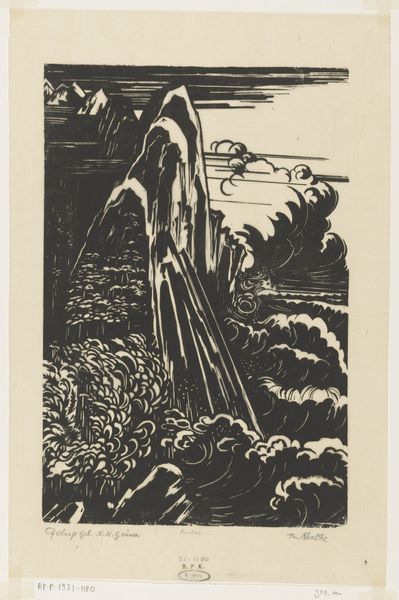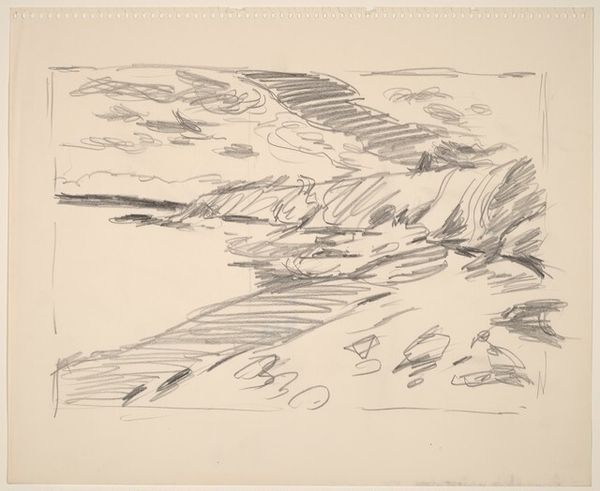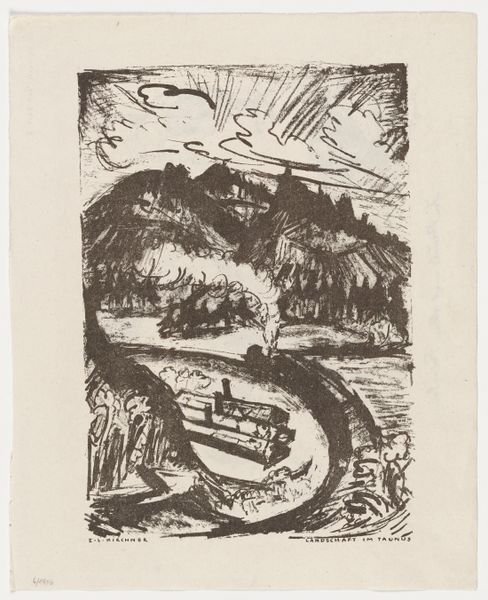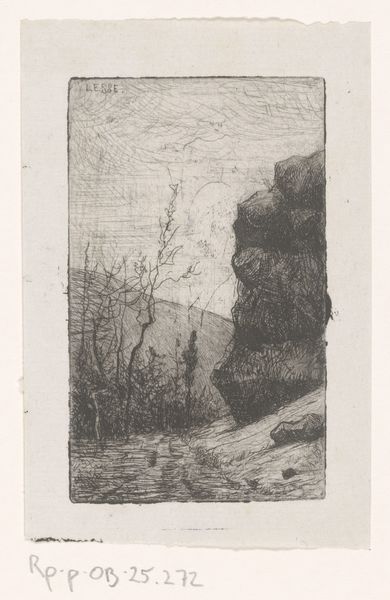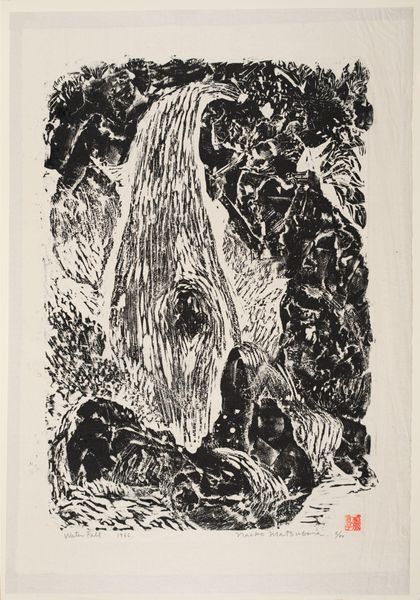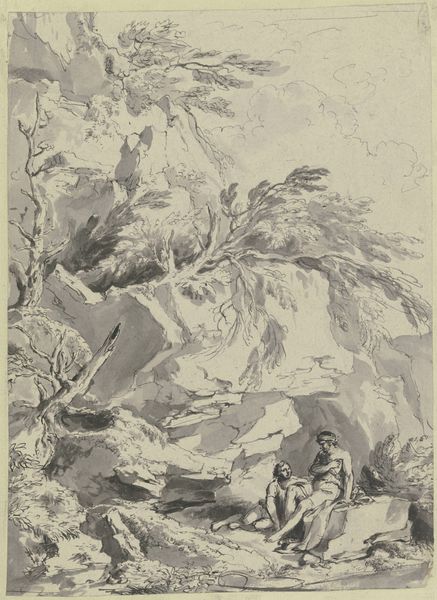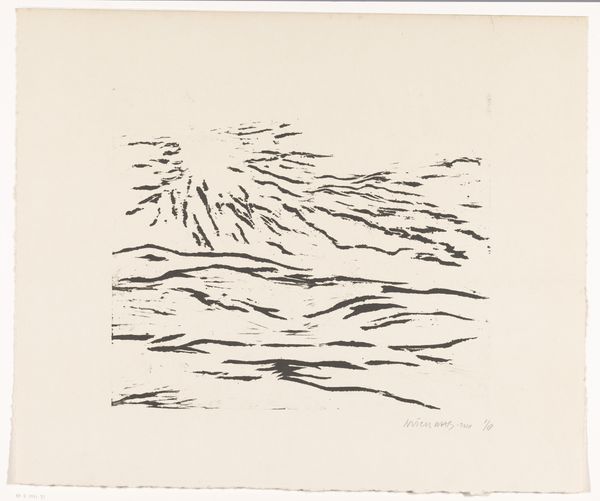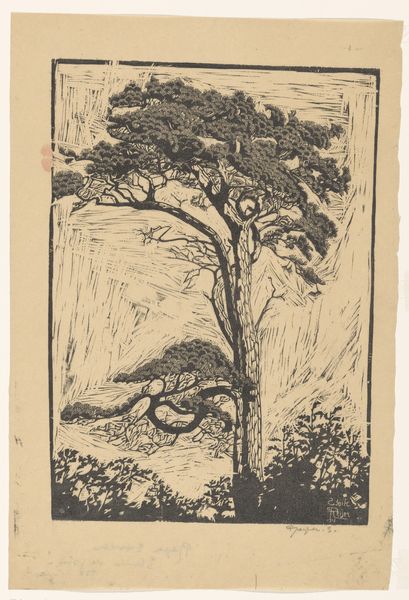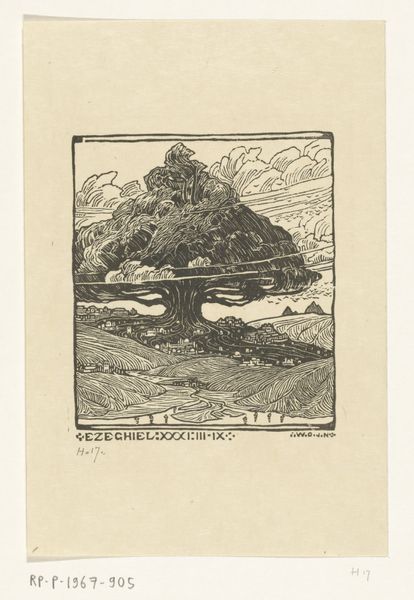
drawing, print, ink, woodcut
#
drawing
#
comic strip sketch
#
art-nouveau
# print
#
pen sketch
#
landscape
#
cartoon sketch
#
personal sketchbook
#
ink
#
sketchwork
#
ink drawing experimentation
#
pen-ink sketch
#
woodcut
#
sketchbook drawing
#
storyboard and sketchbook work
#
sketchbook art
Dimensions: height 130 mm, width 97 mm
Copyright: Rijks Museum: Open Domain
Editor: What a powerfully stark image! There’s something so desolate and urgent in this black-and-white rendering. Curator: Indeed. This woodcut, "Bouw van de ark van Noach" or "Building Noah's Ark," was created between 1900 and 1903 by Wijnand Otto Jan Nieuwenkamp. The piece is a fascinating study in contrasts. Editor: The labor… I can almost feel the strain in those repeated strokes representing rain and rock. It's like the landscape itself is mirroring the toil required to build the ark. The tools look quite basic. Curator: The composition definitely emphasizes that tension. Note the placement of the ark in the foreground, almost dwarfed by the looming rock formation and impending downpour. The vertical lines of the rain contrast sharply with the horizontal emphasis of the landscape, creating a sense of visual unrest. Editor: And look at the miniaturization of the town in the distance! It suggests an entire civilization being deliberately rendered insignificant by the enormity of both the task and the forthcoming deluge. Is that also part of the visual metaphor at play, I wonder? The landscape appears almost barren except for human construction… the only relief from which is these massive unyielding forms and what's pouring out of the sky! Curator: It's a compelling interpretation. The use of black and white here is masterful. Nieuwenkamp exploits the tonal range achievable in woodcut to generate an image that speaks to themes of faith and divine wrath, a morality play depicted through formal elements. Editor: Yes! It’s more than just a depiction of a well-known bible story, its also about labor itself: Nieuwenkamp makes a virtue of these folks out in what would've seemed like impossible circumstance, working wood by hand when faced with the full destructive power of God. Curator: I agree. The work's power comes from the careful balance of form and content. We have, on the one hand, the simplified, almost geometric shapes. And on the other, the complex symbolic weight that it conveys. Editor: It is a stark reminder that art can derive strength from simplicity, a dialogue carved in ink where form serves function while material underscores context. Curator: Precisely. A convergence, one might say, where material constraints enhance the very spiritual core.
Comments
No comments
Be the first to comment and join the conversation on the ultimate creative platform.

